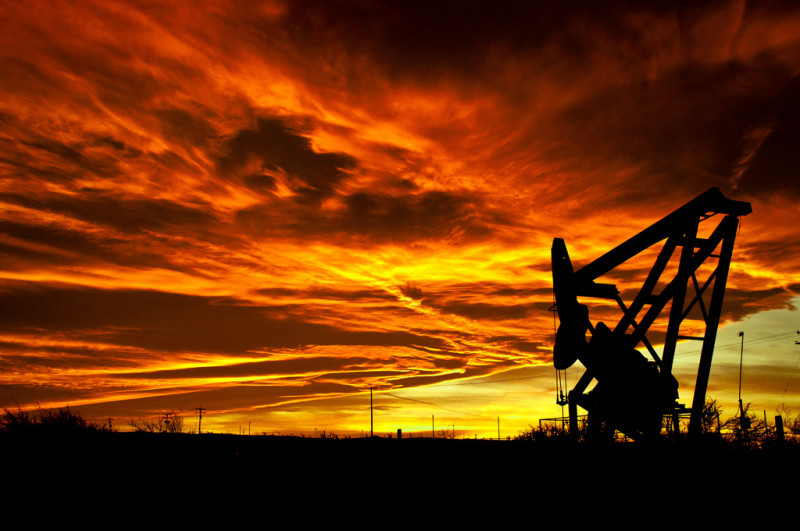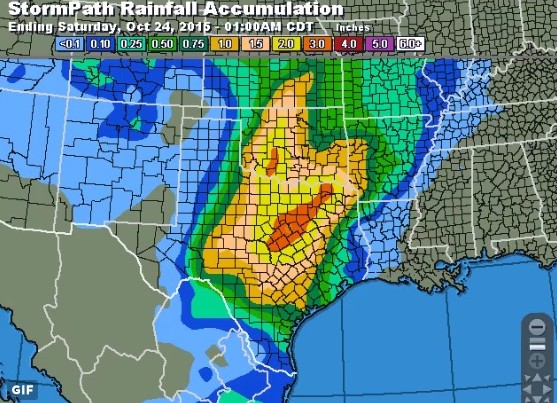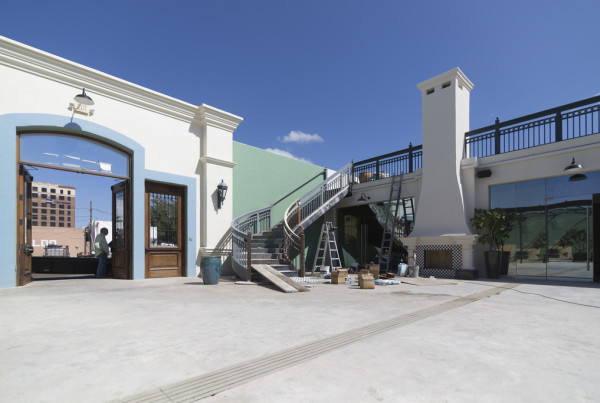This story originally appeared on Inside Energy.
Some of the best places in America to see the starry night sky also happen to the best places to drill for oil. Think western North Dakota or West Texas, places far from any major cities. As oil development exploded in recent years, so has the amount of light pollution.
On a recent fall weekend, volunteer and astronomy-buff Jay Bjerke was manning a massive telescope at Theodore Roosevelt National Park’s Dakota Nights Astronomy Festival.
It was a great night to see the stars. With hardly any moon, the Milky Way was a bright cloud down the middle of the sky. Bjerke was looking towards a butte on the horizon silhouetted by a soft glow.
“You can’t see stars between the horizon and 20 degrees up,” he said, pointing. “That’s the oilfields.”
Behind that butte, half a dozen natural gas flares were blazing just outside the park fence. Park Ranger Jeff Zylland has documented these and other sources of light pollution during the many summer nights he spent driving the gravel roads that encircle the park, looking for what was causing the mysterious glow.
In addition to flares, he blames equipment yards, drilling rigs and other development that’s indirectly related to the oilfield – like gas stations, strip malls and new housing.
“Whenever there’s growth that happens really fast, people don’t put a lot of thought into their lighting,” he said.
The National Park Service’s Natural Sounds and Night Skies Division actually measures light pollution with a special camera. They found that between 2010 and 2013, man-made light visible in the north unit of Theodore Roosevelt National Park, which is closer to the heart of the Bakken oilfield, increased by 500 percent. That’s faster than at any other national park in the country, said Bob Meadows, a scientist with the NPS.
The small staff at Theodore Roosevelt National Park have essentially been in triage mode since the oil boom began, so light pollution hasn’t always been a top priority.
“It’s really hard to get in front of something that’s moving that fast and that is that big,” said Eileen Andes, the chief of interpretation and public affairs at the park.
“It’s hard to deal with a lot of critical things at the same time when you’re short staffed,” Andes said.
Last summer, park rangers began looking into light pollution more seriously. They produced a series of educational videos that talk frankly about the impact of oil development on the park.
But they’re not as proactive, or as ambitious, as Bill Wren, the light pollution guru at the University of Texas McDonald Observatory. His goal is “nothing short of changing the way oil and gas industry lights their nighttime activities.”
The observatory is in West Texas, 450 miles one-way from the University of Texas campus in Austin. The distance ensures darkness, which is necessary for the kind of work that happens here: looking at very faint light from very distant stars.
“If the sky gets brighter than the faint source we’re trying to see, then it’s lost,” Wren said.

Above, minimal light pollution is visible just outside the McDonald Observatory in 2006, before oil and gas development in the Permian Basin took off. Below, nearly the same spot nine years later. The impact of oilfield lighting is clear. Image courtesy Bill Wren.
There’s a sense of urgency in Wren’s work, because light pollution from the near-by Permian Basin oilfield could jeopardize the work being done at the observatory. So he’s reached out to some of the oil men that work there, and found one with a soft spot for West Texas: Stacy Locke, the CEO of Pioneer Energy Services.
Locke’s wife’s family has a ranch near Marathon, Texas, and he said the area’s dark skies are one of his favorite things about the area. It’s also something he took for granted before meeting Bill Wren and realizing the impact that oilfield lighting was having on the night sky. He immediately decided he wanted to help.
He and Wren worked together to make Pioneer’s newest drilling rigs “dark-sky compliant,” and they co-authored a study that they hope might lead to industry best practices. The fixes, as it turns out, are pretty simple — pointing lights on drilling rigs and well pads down, switching to warmer-colored bulbs and LEDs — and they protect worker’s eyes from harsh glare. The key, Locke said, is getting the companies that own the well sites on board.
“They hire all the service providers, so they can mandate, ‘Hey, if you wanna work for me, your equipment has to be dark sky compliant.'”
Bill Wren said light pollution may be decreasing, but it’s probably because there’s been a major slowdown in drilling activity in the last year when the price of oil started plummeting.
As for North Dakota, Locke said he wasn’t aware of the oilfield light pollution problem there, but now that he is, he’s interested in being part of the solution.

















